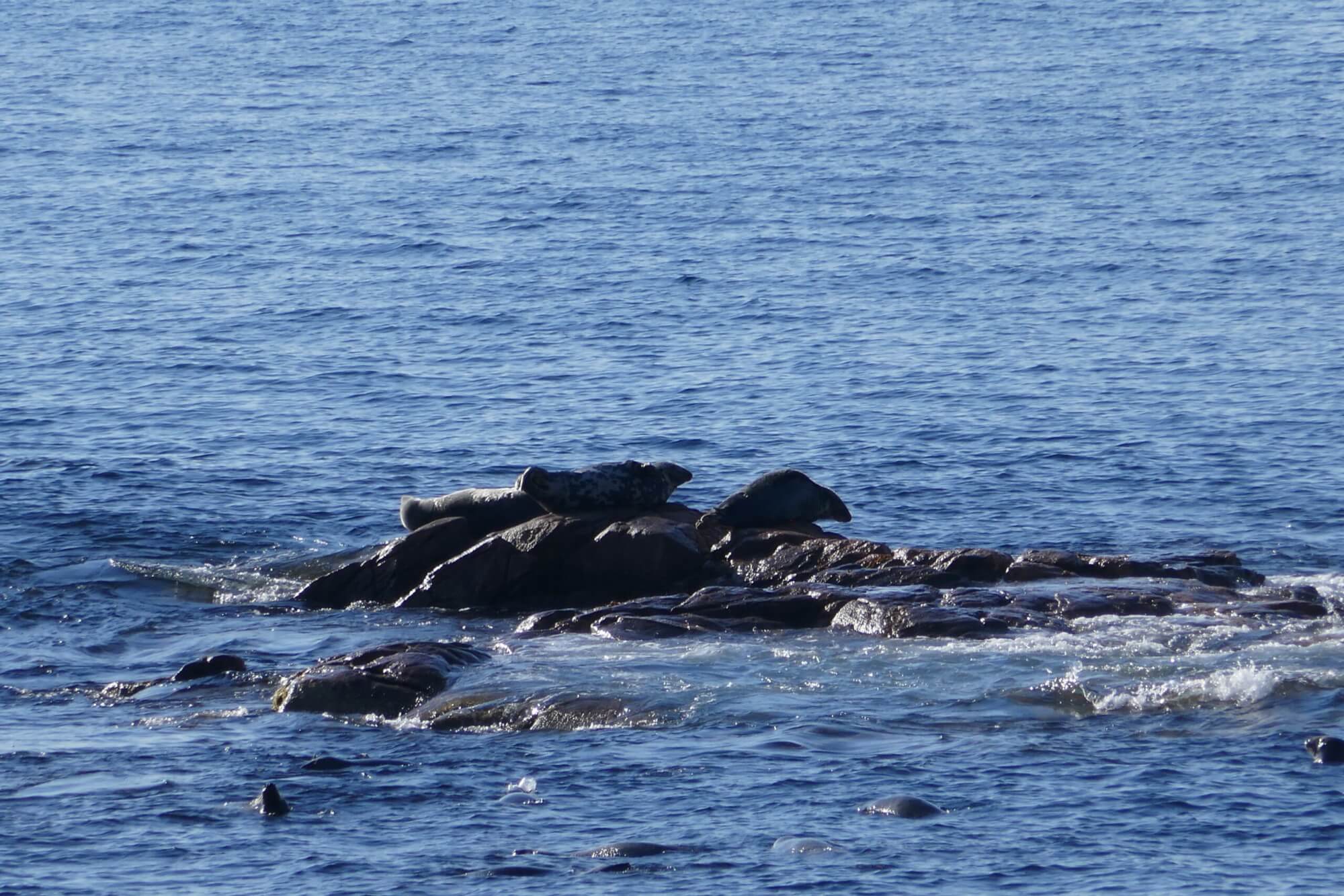Last September, I set off to explore Cape Breton Island. This region of Nova Scotia is well known for a scenic highway called the Cabot Trail. After spending a few summers near the coast of the St. Lawrence where marine mammals are abundant, one question was nagging at me: Would I be able to see marine mammals from shore in this Maritime province?
Breathtaking scenery
After several hours of driving from Quebec with my boyfriend, the road now hugs the coast as it dizzyingly winds its way up the slopes. Cliffs several hundred metres high plunge into the Atlantic. A few sandy beaches seem to be hidden here and there near the rivers.
We start our journey on the island’s east coast because that’s where the road runs closer to the water, even if it can be a bit scary! A large portion of Cape Breton is occupied by the Cape Breton Highlands National Park. At the park’s information desk, we are handed a map of the site that shows several locations where whale watching is possible from shore. Species that frequent the area include minke whale, pilot whale, Atlantic white-sided dolphin, humpback whale, harbour porpoise and fin whale.
Pilot whales and seals
To put all the odds on our side – but also because we are exceedingly fond of reading the interpretation panels – we take breaks at every stop on the map. At the site, our luck begins to turn. When we arrive, we immediately spot about ten grey seals roughly 100 metres away. Three individuals seem to be resting on the rocks, while the others are active below the surface, perhaps foraging.
After about fifteen minutes of admiring the seals, we hear some exclamations to our left. We are told that a large spout was seen offshore. Perhaps a large rorqual? Scanning the horizon, we end up spotting the black backs of three pilot whales heading east. They immediately remind me of belugas by their size as well as by their slow, synchronized group movements. The resemblance ends there, however, as their black colour and characteristically shaped dorsal fin make it impossible to mistake one species for the other. The weather is so calm that we are even able to make out their inconspicuous blows. Although small numbers of pilot whales do frequent the St. Lawrence Estuary, they are rather rare. On the contrary, it is one of the most frequently sighted species in Cape Breton, where the Cape Breton Pilot Whale Project (CBPWP) conducts long-term studies on the population.
Pleasant Bay Whale Interpretive Centre
To learn more about the whales of Cape Breton, a stop at the Pleasant Bay Whale Interpretive Centre is a must. Located just a few steps from the Cabot Trail, the centre is well worth the short detour. There you can see Hool – a three-dimensional replica of a pilot whale – several interpretive panels and artifacts, not to mention a short film featuring scientists from Dalhousie University. I also really enjoyed comparing myself to the life-size tail fins of several species depicted on the wall. They really make you feel small!
We also took the time to broaden our horizons a little by visiting the Alexander Graham Bell National Historic Site, which I highly recommend, especially on a rainy day. A little farther down the road, we took the time to stop at the Fortress of Louisbourg National Historic Site. The site is located on a peninsula bordered to the north by Louisbourg Harbour and the Atlantic Ocean. The town was rebuilt from the ruins of the French colony that was established there in the 18th century.
On our way to see the remains of Canada’s first lighthouse on the other side of the harbour, we saw a harbour seal quietly swimming. What a great way to end our vacation.










